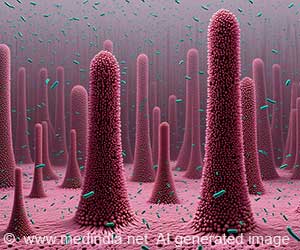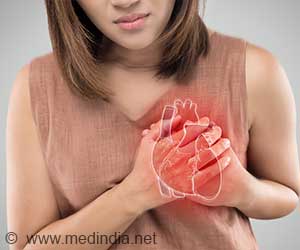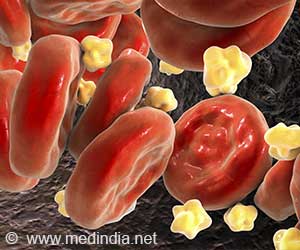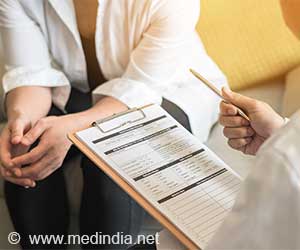Arrhythmia occurs after heart transplantation using induced pluripotent stem cells because the cells transform after transplantation. After 12 weeks, the arrhythmia self resolves.
- Arrhythmia major problem for heart regeneration using stem cells
- Arrhythmia seen between 2-4 weeks after transplant and self resolves after 12 weeks
- Cardiac myocytes from stem cells are two types- working-like and nodal-like
- Arrhythmia caused due to nodal-like cells
TOP INSIGHT
Nodal-like cells are responsible for arrhythmia after heart transplantation using induced pluripotent stem cells. Removing nodal-like cells before transplantation could solve the problem.
Read More..
What are Stem Cells?
Stem cells are unspecialized cells of the body. They can develop into a specialized cell type in the body. In the right conditions, stem cells divide to either produce new stem cells or become specialized cells with a specific function.Stem cells have two primary sources – adult tissues and embryos. Currently, researchers are also working to develop stem cells by reprogramming other cells.
Induced pluripotent stem cells (iPS) stem cells that are created in the laboratory by using tissue-specific cells. These stem cells can become almost any type of specialized cell in the body. They resemble embryonic stem cells.
How was the Experiment Performed?
Heart muscle cells were prepared by using induced pluripotent stem cells. After 20 days, the heart muscles were formed. On the twentieth day, the researchers harvested and cryopreserved the cells.The experiment was performed both in vivo and in vitro, and the cells were observed in two weeks, four weeks, and twelve weeks.
Samples grown in vitro were two dimensional, and three-dimensional samples were also prepared so that it would be closer to the graft in vivo. For the in vivo experiment, the thawed cells after twenty days were transplanted in to rat hearts. The prognosis was similarly observed at two weeks, four weeks and twelve weeks.
In vivo experiments were performed with healthy hearts and hearts with an induced heart attack.
What was the Previously Assumed Cause of Arrhythmia?
Arrhythmia was noted between the 2nd and 4th weeks in a previous study of macaques. It was hypothesized that the arrhythmia was a result of the activity of the transplanted cells.In general, arrhythmia during heart attacks is referred to as ‘re-entry’. The electricity within the heart goes haywire which loops around inside the heart.
Two other research groups who also studied arrhythmia in heart transplanted cells thought the arrhythmia was a result of the transplanted cells and no caused by ‘re-entry’.
These conclusions drove the research team to find out the actual cause of arrhythmia in heart transplant cells by observing the cells at different time points.
What did the Researchers Observe?
The researchers created cardiomyocyte cells and observed their electrical properties.Two types of heart muscle cells are formed from an induced pluripotent stem cell.
- Working-type: These cells contract and relax to produce exertion
- Nodal-like: Acts like an electric pacemaker
The researchers found that in the twelfth week, the graft was mostly made up of working-type cells. The nodal-like cells significantly decreased by then.
The researchers believed that the arrhythmia decreased in the twelfth week because the number of nodal-like cells decreased. A decrease in the activity of nodal-like cells would cause the extra electrical activity also to decrease.
Why does Nodal-Like Cells Decrease In Vivo?
The researchers performed many experiments, but they did not find any satisfactory explanation.One explanation the researchers finally found was the abundance of SHOX2 in proliferating cells before transplantation. SHOX2 generally plays a vital role in the development and differentiation of the cardiac conduction system.
The researchers further observed the percentage of KI-67 positive cells around two weeks after transplantation. It was found that nodal-like cells don’t multiply after transplantation.
The researchers confirmed the results at the RNA level by using PCA tools analysis. The observed the fetal human heart RNA and adult human heart RNA.
RNA levels were tested both in vitro and in vivo.
- Upregulation of KCNJ2, which is mainly responsible for the maintenance of resting membrane potential in ventricular myocytes was detected only in vivo samples at the 12th week
- Down regulation of nodal-cell related genes like ISL1, CACNA1H, and TBX18 was also detected only in vivo samples at 12 weeks
- Expression of nodal cardiomyocyte-related genes like HCN4 and TBX3 gradually decreased over 12 weeks in vivo only
- Expression of SHOX2 and ISL1, which encode transcriptional regulators of the pacemaker gene program, were mostly arrested after in vivo transplantation, whereas their expression was retained throughout 12 weeks in vitro culture
In summary, one of the biggest obstacles of regenerative medicine for the heart is arrhythmia. If left on its own, the arrhythmia is solved. The study helps explain the possible mechanism of why arrhythmia occurs and how it resolves itself.
Reference :
- Increased predominance of the matured ventricular subtype in embryonic stem cell-derived cardiomyocytes in vivo - (https://www.nature.com/articles/s41598-020-68373-9)
Source-Medindia
 MEDINDIA
MEDINDIA

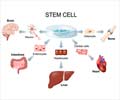

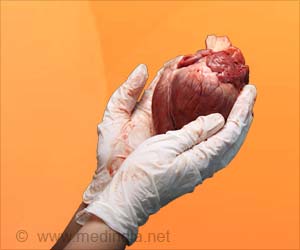

 Email
Email




